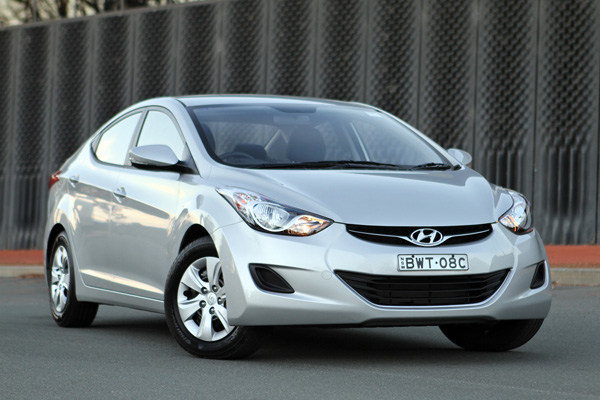
2011 Hyundai Elantra
Hyundai i30 hatch has been a big seller for many years in Australia, but the i30
sedan, until 2020, was confusingly called Elantra rather than i30, is well worth
consideration.
The fourth generation Elantra reaches us here in August 2006. It’s the one we are
concentrating on in this used car checkout.
Styling at that time was unashamedly Korean, with the sort of lines that didn’t appeal
to Aussies. The fifth generation Elantra, from July 2011 is more European in style.
Then from February 2016 the gen-six Elantra arguably led the way on the
international market with lines that some European cars look to be following – how
things change…
It is not just the styling that’s making Hyundai Elantra stand out. The South Korean
marques – Hyundai and Kia are allied with one another – are starting to lead the
world in build quality, owner satisfaction and reliability.
Australian engineers are being more and more involved in the steering and
suspension departments during the design stages. You wouldn’t call Elantra a sports
sedan, but for its class it’s not too bad. (See later note on Elantra SR Turbo.)
Elantra is almost a full four-seater for adults in its latest iteration, with each new
generation providing a slightly larger car with a bit more interior space. Headroom for
tall travelers may be limited, especially if a sunroof is fitted, so take your teenagers
along for a test drive before settling on an Elantra. BTW, three kids in the back seat
will have room to move, especially in the later generations.
Power for the gen-four Elantra comes from 2.0-litre engine matched with either a
five-speed manual or four-speed auto.
A new generation four-cylinder 1.8-litre engine arrived in the generation-five Elantra,
power was transferred to the front wheels though manual or automatic transmission,
both with six forward ratios. This responsive unit and added gears improved
performance and reduced emissions.
An improved version of the 1.8 arrived with the next generation Elantra in 2016. Its
capacity was increased to 2.0 litres. It also had a six-speed manual or six-speed
auto.
October 2016 saw Hyundai stick a toe-in-the-water with a medium-performance
model called the Elantra SR Turbo. It has been reasonably successful and owners
say they love them. When looking to buy a used sporty car be aware it may have
been thrashed.
Late in 2018 the Elantra range received a facelift, with a cascading grille, redesigned
headlights and taillights, an integrated bootlid spoiler and lower diffuser. Inside
there’s a revamped dashboard, a Supervision infotainment cluster, there was a new
steering wheel design and new trims and finishes.
2014 Hyundai Elantra
Hyundai Elantra Active gets an 8.0-inch touchscreen satellite navigation system
paired with an eight-speaker Infinity premium audio system with a DAB+ radio, Apple
CarPlay and Android Auto compatibility.
The Elantra name was dropped in late 2020 to be replaced by the i30 sedan in line
with competitors .
Since its early rough and ready days Downunder in the mid-1980s, Hyundai has
improved out of sight and is now a major player on our market. There are multiple
dealers in all large metro cities, with ever increasing representation in country cities
and large towns.
Spare parts and servicing costs are about average for this class and we’ve heard no
major complaints on prices or availability of parts.
Insurance is about average in this class, though, as always, it pays to shop around.
WHAT TO LOOK FOR
We haven’t seen many ex-rental Hyundai Elantras, but be wary of any with a lot of
kilometres on the clock.
Seat trim and boot mats that are in poor condition may intricate an uncaring owner.
It’s possibly also a sign of an ex-rental car.
A clicking noise when the steering wheel is turned probably means coupling may be
damaged.
The covering on the steering wheel may flake off. It’s not a danger, but is unsightly.
Make sure that all electrical items work correctly. Using the owner’s handbook
instructions is the simplest way to make sure you cover everything.
Check the engine starts easily, especially if it’s cold. Too long a period of cranking
indicates possible problems.
2019 Hyundai Elantra
A manual gearbox which crunches on fast downchanges could be due for an
overhaul, or there may be a clutch problem. The common third-to-second is the first
change that generally suffers.
HOW MUCH?
Expect to pay from $3000 to $6000 for a 2011 Hyundai Elantra Elite; $5500 to $9000
for a 2012 Premium; $8000 to $13,000 for a 2015 Premium or a 2017 Active; $9000
to $14,000 for a 2016 Elite; $12,000 to $18.000 for a 2016 SR Turbo; $14,000 to
$20,000 for a 2017 SR Turbo; $15,000 to $22,000 for a 2018 Sport Premium; and
$22,000 to $30,000 for a 2020 Sport Premium.
CAR BUYING TIP
Spring is a favourite time to buy a car as folks get ready for holiday trips. This can
mean an increase in prices, so you may be better holding off till winter.
RECALLS: To browse recalls on all vehicles go to the ACCC at:
www.productsafety.gov.au/products/transport/cars/